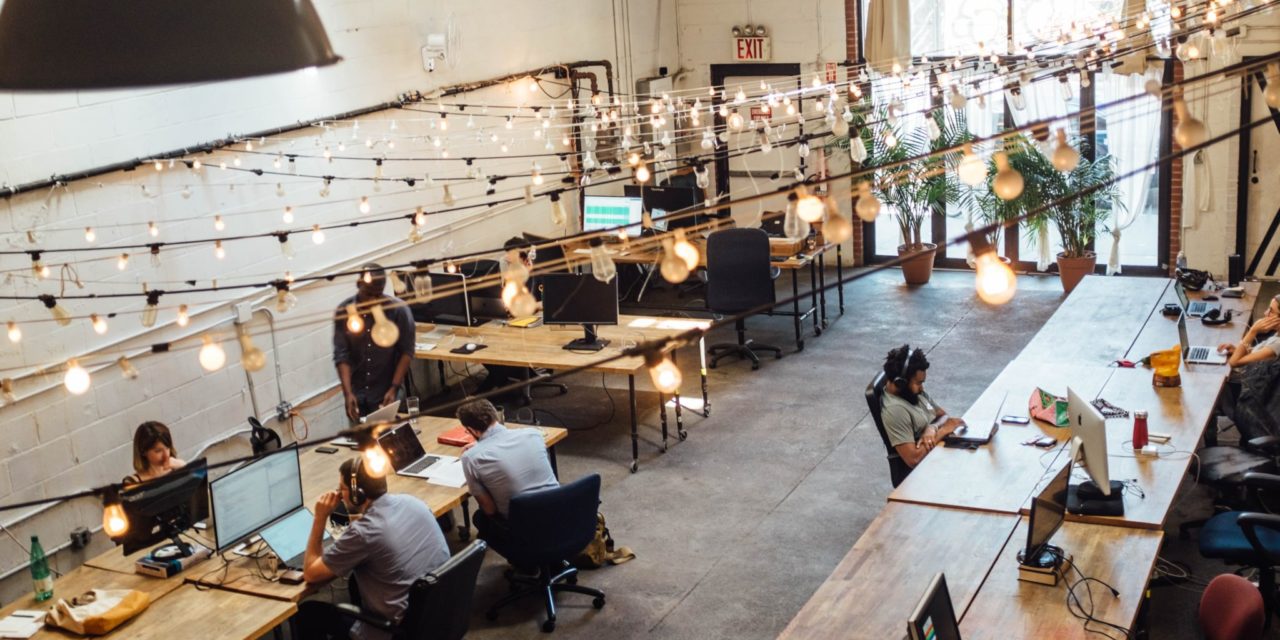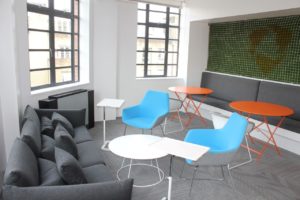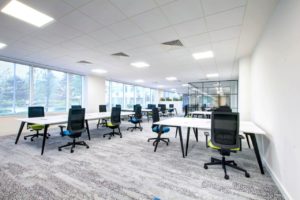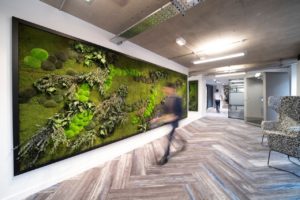We have recently seen a revolution taking place in workspaces across the UK, with new working practises presenting designers with exciting new challenges. This, in part, is down to the impact COVID-19, with trends that were already rumbling starting to pick up pace.
Rap Interiors’ take a look at the way things are changing…
- Co-Working
Co-working offices have been springing up at great speed in recent years. And with more companies recognising the advantages of flexible working, the trend is showing no signs of slowing down.
For hybrid workers who prefer the office to home, co-working spaces are a real benefit. There, they can rent out an individual workspace, while benefitting from amenities that come with co-working offices, like coffee and snacks. Small teams are also at an advantage due to the ability to network with others in the shared space.
- Hybrid Working
Hybrid working is where an employee splits his or her time between the office and home. With office employees largely working from home during the pandemic, it is no surprise to see some businesses adopting the hybrid approach to offer employees a greater work-life balance.
This has meant that some companies have had to adapt their office layout to accommodate the change. Some have turned vacant sections into collaboration zones, while others have re-configured their entire office to make the spaces for agile working approach.
- The Office as an Experience
Employers realise that if they’re going to succeed in getting people back to the office, the best way to do that is creating a heightened office experience.
Some companies have adopted the agile working approach, where employees can choose a work “zone” that complements a specific task, whether it be creative brainstorming with colleagues; quiet, independent working; or private meetings in sound-proof booths. The idea is to make coming to the office an experience for employees.
- Sub-Letting
With many companies operating with smaller teams or embracing hybrid working full-time, some have resorted to sub-letting unused office space to save money – especially those with long leases.
With leases typically lasting from 10 to 15 years in London, this option is a no-brainer. Moreover, it can be relatively simple to achieve with the help of a refurbishment company with space planning and furniture expertise.
- Greener Environments
For companies seeking new offices, sustainability is becoming one of the most important factors. With corporate social responsibility in mind, many are looking for sustainable spaces to ensure they’re doing their bit in reducing the negative impact of climate change.
Some of the cornerstones of a sustainable office space are energy efficient lighting, water conservation systems, responsibly sourced furniture, and good insulation. Combined with a biophilic design scheme, companies can now firmly establish a green ethos within their offices.
Thanks for Reading!
Rap has helped scores of clients return to the office with modern, unique and forward-thinking design schemes. Whether you’re looking to make your office more agile, facilitate hybrid working or improve sustainability, Rap has the experience and expertise to help. Please visit www.rapinteriors.co.uk to learn more.





